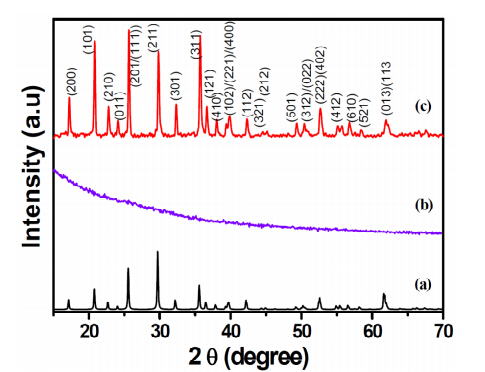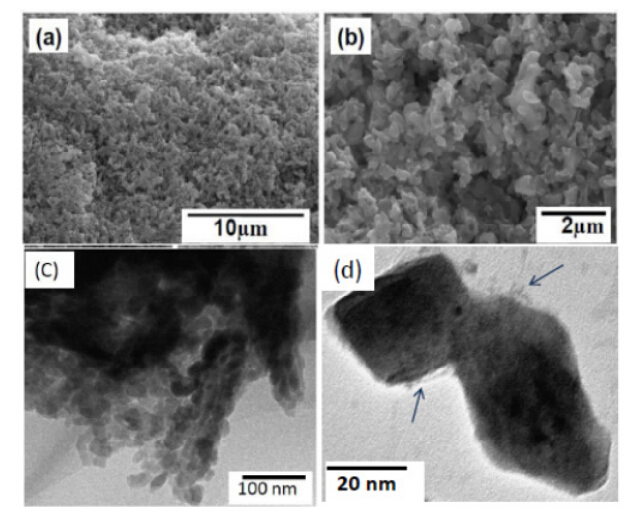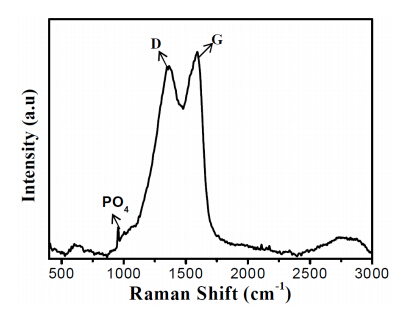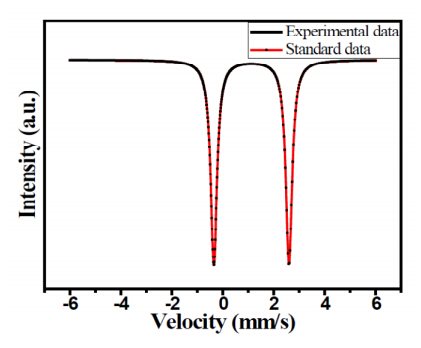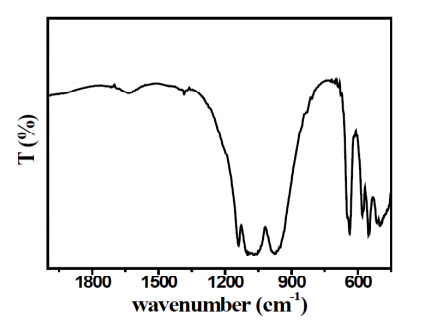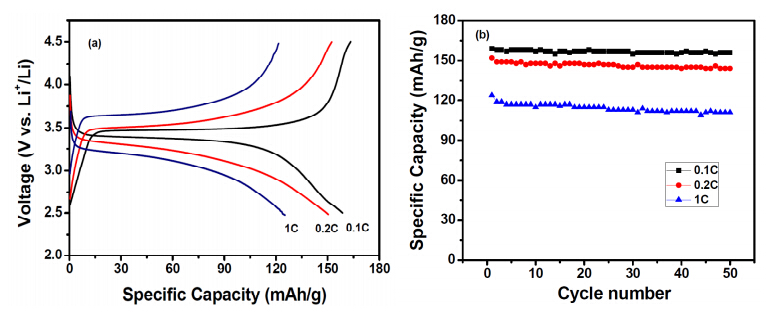1. Introduction
In recent years, rechargeable Li-ion batteries have emerged as potential electrochemical storage technology, which is suitable for wide range of application from portable electronics to electric automotive industry such as electric vehicles (EV), hybrid electric vehicles (HEV) and plug-in hybrid electric vehicles (PHEV) [1]. Among the several lithium transitional metal based cathode materials, olivine based LiFePO4 has been developed as most promising cathode c and idate because of its low toxicity, low cost, structural stability, excellent reversibility, environmentally benign and high safety in h and ling and operation [2,3]. This material has relatively high theoretical capacity of 170 mAhg-1 delivered at moderate potentials at about 3.45 V verses Li/Li+ and capacity fading is very small even after several hundred cycles [4,5,6]. In addition, it shows high tolerance against thermal abuse and over charging, which make it attractive particularly for heavy vehicular applications. The main obstacles with olivine type-LiFePO4 material are its low electronic (~10-9 S cm-1) and lithium ion conductivities, which limits its rate capability. This makes it difficult to use LiFePO4 as the cathode material for commercial battery applications. The above problem can be overcome by different approaches such as reduction in particle size and coating with conductive carbon [7,8,9,10]. This has led to the mass production of LiFePO4 by some companies and material is commercially available in market. However, in spite of all these progress and advantages, the production cost of the material still remains as a challenging factor. Therefore, a simple cost effective process technique needs to be developed for large scale production of LiFePO4.
Many different techniques have been successfully used to synthesis pure olivine LiFePO4 such as, sol-gel [11,12,13], hydrothermal [14,15], polyol [16], microwave [17,18], solvothermal [19], mechanical alloying [20,21], co-precipitation [22,23], vapor deposition [24], spray pyrolysis [25]. Among all these methods, combustion process is one of the most attractive and energy-efficient synthesis routes for various oxide materials. The self-generated heat of synthesis provides localized energy supply thereby eliminating the need for high, externally applied processing temperatures to synthesize pure, small and well-distributed particles. In spite of all the advantages, this process is yet derives merit for LiFePO4 synthesis. Recently, Kalaiselvi et al. have employed glycine assisted combustion route to prepare nano-porous LiFePO4 [26]. However, this process still requires long duration combustion reaction and high post heat treatment temperature of 750 °C to obtain crystalline LiFePO4/C product.
In the present study, we have developed urea-based modified combustion method, where sucrose is used in the initial stages as carbon source as well as reducing agent. This process is simple and inexpensive route for obtaining LiFePO4/C material and has great potential from the industrial point of view. To the best of our knowledge, the urea and sucrose based combustion method has not been reported for LiFePO4/C preparation. The heat treated LiFePO4/C powder thus processed displays a well developed olivine crystalline structure and shows excellent electrochemical performance.
2. Experimental procedure
2.1. Synthesis method
Stoichiometric compositions of metal nitrates (oxidizers) such as LiNO3 and Fe (NO3) 3.9H2O along with (NH4) 2HPO4 as phosphate source were used as starting materials. The urea and sucrose were used as fuel and carbon source, respectively. The sugar also acts as reducing agent to avoid the oxidation of divalent iron to trivalent. According to the propellant chemistry, for stoichiometric redox reaction between a fuel and an oxidizer i.e. the ratio of the net oxidizing valence of the metal nitrate to the net reducing valence of the fuel should be unity [27,28]. The metal salts were dissolved in minimum amount of deionized water and kept on stirring continuously at 100 °C temperature. Then few drops of concentrated HNO3 were added to make the solution acidic. After the addition of urea and sucrose as fuel and carbon source, the reaction mixture was heated on a preheated hot plate at 300 °C. Within few minutes of heating, the reaction mixture converted into black color viscous liquid and formed a fluffy mass which was auto-ignited with the evolution of a large volume of gases.
The obtained powders were then mixed with sucrose solution (equivalent to 10 wt% of carbon) and dried. The dried powder was thoroughly mixed using agate mortar and heated in a tubular furnace under 95% Ar and 5% H2 atmosphere at 600 ºC for 6 h. The samples were subjected to chemical/physical and electrochemical characterizations.
2.2. Characterization techniques
The thermal decomposition behavior of as synthesized powder was examined with a thermo-gravimetric analyzer (TG-DSC) on a Netzch (Luxx, sTA, 449, Jupiter, Germany) analyzer under N2 flow. The TG-DSC spectra were acquired in the temperature range from 30-800 ºC at a heating rate of 10 ºC min-1. X-ray diffraction patterns of these samples were recorded using Cu-Kά (λ = 1.5418 Aº (in 2θ) ) radiation. The morphology of the powder was observed on a Field emission scanning electron microscope (FE-SEM; Hitachi’s S-4300 SE/N). Transmission electron microscope analysis were performed on (TEM; Tecnai G-20, 200KeV) working at a 200 kV accelerating voltage. Raman spectra were recorded using Raman spectrometer (Horiba Jobin-Yvon Labtam HR 800) to analyze the structure and composition of the LiFePO4 and carbon materials. Fourier transformation infrared spectroscopy (FTIR) absorption spectra were recorded from Fourier transformation interferometer (GXoptica UA) over the wave number range 400-2000 cm-1, Mossbauer spectra was recorded with FAST Cometech Spectrometer, Fe gamma ray source.
2.3. Electrochemical measurement
The electrochemical performance was studied using swagelock cell that were assembled in an Ar filled glove box. The cathode was prepared by mixing active material with acetylene black as electronic conductor and PVDF as binder in the weight ratio of 80:10:10 in n-methyl pyrrolidine (NMP) solvent and thoroughly grounded. The slurry of the mixture was coated uniformly on a non-corrosive stainless steel plate using doctor blade method. The coated plates were dried in a vacuum oven at 100 ºC for 8 h. After vacuum drying, the disc was transferred into argon glove box and assembled as working electrode in a swagelock cell. The whattman glass filter paper was used as a separator and lithium metal foil as a counter and reference electrodes. A solution of 1 mol.L-1 LiPF6 in ethylene carbonate and dimethyl carbonate (EC: DMC) [1:1] was employed as electrolyte. The charge-discharge measurement was conducted using Arbin battery testing instrument and the cells were cycled at different C-rate between 2.5-4.5 V vs. Li/Li+.
3. Results and discussions
3.1. TG-DSC analysis
The TG-DSC curve of as prepared powders by combustion method is displayed in the Figure 1. The results show three steps of weight loss, which corresponding to temperature range 100-110, 280-450 and 500-600 ºC. The first endothermic peak corresponds to weight loss in the DSC curve due to evaporation of external moisture. The second endothermic peak corresponds to decomposition of phosphate and sucrose [29]. The broad exothermic peak at 450-600 ºC indicates the crystallization of LiFePO4. Above 600 °C there is no weight loss in TG-DSC curve and no exothermic peak, which indicates the complete crystallization of LiFePO4. Further increase in temperature leads to powder melting (> 800 ºC). Based on the TG-DSC analysis the powder was calcinated at 600 ºC.
3.2. Structuralanalysis
Figure 2 represents the XRD patterns of st and ard LiFePO4, as prepared and heat treated sample at 600 ºC. The profile of the as prepared combustion sample shows no reflection peaks. This indicates that as prepared sample is amorphous in nature (figure-2b). The heat treated LiFePO4/C sample at 600 ºC shows sharp and well defined reflections (figure-2c). All these reflections can be indexed based on the orthorhombic structure of LiFePO4 with the space group Pnma. It is in good agreement with the pattern of orthorhombic LiFePO4 (JCPDS No: 00-40-1499) as shown in Figure 2a. The lattice parameters calculated using XRD data of the heat treated sample are a = 10.347 Å, b = 6.0189 Å, c = 4.7039 Å, these values are in good agreement with those reported in the literature [30]. The average crystallite size that was calculated using Scherrer equation was found to be around 30-40 nm. Generally, formation of LiFePO4 single phase requires a high reaction temperature above 700 ºC under controlled (Ar and H2) atmosphere. For example, Kalaiselvi et al obtained single phase LiFePO4 nanocrystals using similar glycine assisted combustion process at 750 ºC under Ar atmosphere [26]. They observed some impurity phases such as α-Fe2O3 and magnetite Fe3O4 when heat treatment was carried out under Ar-H2. However, in the present study we were able to obtained single phase LiFePO4 nanocrystals at only 600 ºC under Ar-H2 atmosphere as evidenced in Figure 2a. Addition of sucrose during the combustion process reduces the Fe3+ to Fe2+ during combustion reaction, where sucrose acted as local reducing agent as well as carbon source.
3.3. Morphology
SEM and TEM were employed to analyze the particle morphology and size of the LiFePO4 nano powders. Figure 3 shows the SEM images of bare LiFePO4 and carbon coated LiFePO4 samples. In the SEM image, the LiFePO4 nanocrystals show good homogeneity and have porous network type morphology, which was formed by the assembly of small nanoparticles. The size and morphology of the individual LiFePO4/C nanocrystals can be observed in the TEM image in Figure 3c. This image shows that the size of the individualparticles is in range of 30-40 nm with spherical and oval shape morphology. Besides, the distribution of particle size is uniform. The small particles with improved porous structure enables easy throughput of the electrolyte and render smaller distance for Li-ion diffusion in the cathode material. This results in improved electrochemical properties of cathode materials. The size of individual particles has a great effect on the electrochemical performance of LiFePO4. Thus, for the pure LiFePO4 samples, the reversible capacity would be decreased rapidly with the increase in crystal size.
3.4. Ramanspectroscopic analysis
Raman spectroscopy was used to characterize the type of the carbon coating on the particles surface. Cheng-Zhang Lu et al, has reported that the specific capacity increased for materials with well-defined carbon b and s [31]. Figure 4 shows the Raman spectrum of LiFePO4/C sample. The spectra consist of relatively small b and at 940 cm-1 which is due to the symmetric PO4 stretching vibration of LiFePO4. Intense broad b and , at 1350 cm-1 and 1590 cm-1, that can be assigned to D-b and (i.e. A1g mode of the disordered carbon) and G-b and (i.e E2g vibration mode of graphitic carbon). The decrease in the intensity ratio of D and G b and of carbon will increase amount of graphitic cluster in the structure, which leads to improved electrical conductivity of the material [32]. The ID/IG ratio of carbon coated LiFePO4 cathode is 0.92. The high discharge capacities and rate capability can be increased by coating the samples by high surface area carbon.
3.5. Mossbauerspectroscopic analysis
Symmetric Mossbauer spectra were employed to identify the oxidation state of Fe in the samples. The Mossbauer spectra analysis of as prepared LiFePO4 is displayed in Figure 5. The analysis reveals that the hyperfine parameters typical of high-spin (S = 2) Fe (II) oxidation state, in which isomeric shift (IS), quadruple splitting (QS), and linewidth (Γ) are 1.12 mm/s, 2.94 mm/s and 0.29 mm/s respectively, which corresponds to the data reported in literature [33]. The Fe3+ doublet is not detected in both as prepared as well as heat treated sample, this results suggests that the Fe in the sample are in ferrous (II) oxidation state.
3.6. FTIR analysis
The FTIR spectroscopy is one of the major tools for molecular structural determination of materials. The FTIR image of carbon coated LiFePO4 sample is displayed in Figure 6. The sample shows two types of vibrational modes, first is intramolecular stretching vibration mode of PO43- anion (V1 and V3) observed at 940-1140 cm-1. The second is intramolecular bending vibration mode (V4) of PO43- anion, observed in the region of 640-530 cm-1. The absorption b and at 1138 cm-1 attributes to symmetric and antisymmetric stretching vibration of O-P-O and the b and s at 1096, 1063, 636 and 577 cm-1 attributes to anti-symmetric stretching vibration of P-O. The absorption b and at 579, 551 and , 503 cm-1 attributes to anti-symmetric bending vibration of O-P-O [35]. The FTIR spectra of samples show finer and pure without any impurities.
3.7. Electrochemical properties
Figure 7 displays the selected galvanostatic charge-discharge curves and its cyclic performance of the LiFePO4/C at room temperature cycled in the voltage range 2.5-4.5 V at different current rate. From Figure 7a, the profiles of 0.1 C rate exhibits flat plateau around 3.4V, which is corresponding to the reversible insertion of Li+ into the FePO4 [36]. The negligible voltage difference between the charge and discharge plateaus indicates the good lithium diffusion kinetics. It is observed that the electrode displays a reversible discharge capacity of 156 mAhg-1 and charge capacity of 158 mAhg-1. Thus, the sample shows the high columbic efficiency of 98.7%. In addition, the charge and discharge profiles did not change and hardly polarized till last cycle. Both charge and discharge value exhibit good reversible capacity with a capacity retention rate of about 83% upon cycling up to 30 cycles at 0.1 C, as shown in Figure 7b. The initial charge-discharge curves of LiFePO4/C at different C rates are shown in Figure 7a. It can be seen that the electrode presents about 144 and 134 mAhg-1 capacity at 0.5 and 1C rate, respectively. Cyclic stability of the LiFePO4/C sample measured at different current rate is shown in Figure 7b. At low current rates (0.1 and 0.5 C rate), the LiFePO4/C sample exhibits good cycling performance with less capacity fading in 30 cycles. After 30 cycles, the LiFePO4/C retains 82 and 73% of its initial c apacity at 0.5 and 1 C rate, respectively. This charge-discharge capacity and rate performance are comparable to the LiFePO4/C samples prepared by glycine assisted combustion process at 750 °C [26]. However, lower discharge voltage and smaller reversible capacity at above 1 C rate was observed, which is due to the rise of electrode polarization. This would increase by cycling the cell with high C rate and thus the specific capacity within the given potential window would decrease.
4. Conclusion
The nanocrystalline carbon coated LiFePO4 material was successfully synthesized by a simple urea and sucrose assisted combustion process using the precursor containing cheaper trivalent ion. This is simple process towards the synthesis of carbon coated LiFePO4 composite material that has high power and high energy densities for commercial Li-ion battery application. The Mossbauer analysis shows that addition of sucrose in the initial stages reduces the ferric to ferrous state. The heat treated samples shows pure and well defined olivine LiFePO4/C structure. The LiFePO4/C sample shows porous network type morphology with the size of the individual particles in the range of 30-40 nm with spherical and oval shape morphology. LiFePO4/C sample exhibits excellent initial discharge capacity of 156 mAhg-1 and retain about 83% capacity after 30 cycles. This method is simple, efficient, economical, environment friendly, and has great potent from industrial point of view.
Acknowledgement
The authors acknowledge Dr. Y. Srinivas Rao (Centre for Ceramic, ARCI) for the help with TG and DSC measurements, Dr. Manivelraj (Advanced Magnetic Group, DMRL) for his suggestion and the use of Mossbauer Spectroscopy and Mr.Akki Bhaskar (IIT Hyderabad) for helping in electrochemical measurement.









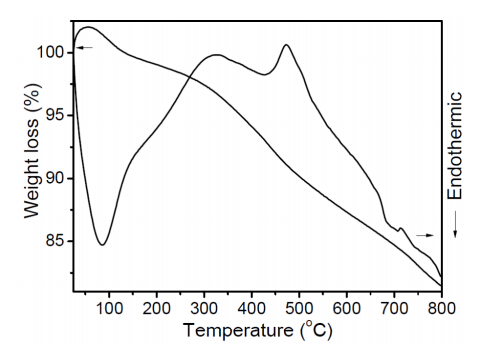
 DownLoad:
DownLoad: 